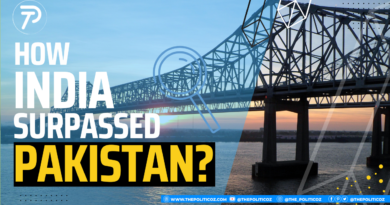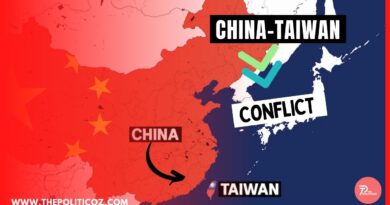Blue Economy of Pakistan: A Hidden Treasure Waiting to Be Discovered
The blue economy depends on the wise utilization of ocean resources to foster economic development, enhance livelihoods, and maintain the health of marine ecosystems. Pakistan has recently begun to appreciate the enormous potential that exists within its maritime borders. This article dives into the Blue economy of Pakistan, highlighting its untapped potential, offering an in-depth analysis of its current state, and proposing ways for optimizing its exploitation.
Table of Contents
- Exploring Blue Economy of Pakistan: Potential, Critical Analysis, and Long-Term Utilization. 1
- The Blue Economy
- Embracing the Blue Economy
- Pakistan’s Maritime Terrain
- Blue Economy of Pakistan Potential
- Aquaculture and fishing
- Generation of renewable energy
- Seaborne trade and shipping
- Tourism
- Current Situation Analysis
- Exploitation vs. conservation of natural resources
- Governance and institutional challenges
- Concerns about pollution and the environment
- Strategies for Sustainable Utilization
- Regulatory frameworks must be strengthened
- Research and innovation must be encouraged
- Community engagement and livelihood improvement
- International collaborations and partnerships
- Problems and Solutions
- Economic and environmental interests must be balanced
- Overcoming Technological Obstacles
- Resilience to Climate Change
- Conclusion
The Blue Economy
The term “blue economy” refers to economic activity that takes place in the ocean. Fishing, aquaculture, shipping, tourism, and the creation of renewable energy are just a few of the many activities that fall under this umbrella.
Pakistan’s maritime landscape is enormous, with a lengthy coastline and a wide Exclusive Economic Zone (EEZ). This provides the country with a significant opportunity to establish a vibrant blue economy.
In this blog post, we will look at the potential of the blue economy of Pakistan, the hurdles it confronts in creating it, and the techniques that can be employed to overcome these obstacles.
Embracing the Blue Economy
The blue economy is a new notion that has gained traction in recent years. It is a combination of the words “blue” and “economy,” and it refers to economic activities in the ocean.
Fisheries and aquaculture, renewable energy generation, seaborne trade and shipping, and tourism are all part of the blue economy.
Pakistan’s Maritime Terrain
Pakistan’s maritime landscape is enormous, with a lengthy coastline and a wide Exclusive Economic Zone (EEZ). The country’s exclusive economic zone (EEZ) spans more than 100,000 square kilometres, and its coastline is about 1,000 kilometres long.
The EEZ of Pakistan is abundant in marine resources. The country has a strong fishing sector and might produce renewable energy from the ocean. The coastline of Pakistan is also a renowned tourist attraction.
Blue Economy of Pakistan Potential
Pakistan has a lot of potential for a booming blue economy. The country’s maritime terrain is rich in resources that can be leveraged to stimulate economic growth and job creation.
Some of the significant potential areas of the Pakistani blue economy include:
Aquaculture and fishing:
Pakistan has a lengthy fishing history, and its seafood exports are worth millions of dollars each year. The country also has the potential to grow a significant aquaculture business.
Generation of renewable energy:
Pakistan has a large potential for renewable energy generation from the water. The country’s coastline is subject to severe winds and waves, and there are numerous tidal estuaries.
Seaborne trade and shipping:
Pakistan is an important seaborne commercial hub. Every year, the country’s ports handle millions of tons of goods.
Tourism:
The coastline of Pakistan is a renowned tourist attraction. Beautiful beaches, coral reefs, and diverse marine life may be found throughout the country.
Also Read: DEMOCRACY IN PAKISTAN: A FAILED EXPERIMENT?
Current Situation Analysis
Despite the potential of the Blue economy of Pakistan, the country has yet to fully develop it. The country confronts a number of hurdles in establishing its blue economy, including:
Exploitation vs. conservation of natural resources:
There is a conflict between the need to use marine resources in order to promote economic growth and the necessity to conserve marine resources in order to ensure environmental sustainability. This battle is referred to as the “tragedy of the commons”. A situation where a shared resource is misused and exhausted because no one is motivated to conserve it is known as the tragedy of the commons.
The struggle between exploitation and conservation is especially apparent in the Blue economy of Pakistan. Many people rely on the country’s fishing sector for a living, but it is also putting pressure on fish stocks. The country’s aquaculture industry is also quickly expanding, but it is critical that it is done in a sustainable manner.
To preserve the long-term viability of the Blue economy of Pakistan, the government must find a balance between exploitation and conservation. This will necessitate a well-defined plan for managing marine resources as well as a commitment to enforcement.
Governance and institutional challenges:
A number of institutional problems must be overcome in order for Pakistan to grow its blue economy. These difficulties include a lack of a defined legislative and regulatory framework, a lack of cooperation among various government entities, and a lack of competence to manage maritime resources.
Pakistan’s government must strengthen its institutional structure for the blue economy. This will necessitate the creation of a clear legislative and regulatory framework, the creation of a dedicated agency to manage maritime resources, and the collaboration of other government entities.
The government must also develop competence to manage marine resources. This will necessitate training for government personnel and the commercial sector, as well as technical help.
Concerns about pollution and the environment:
Pollution and other environmental concerns are threatening Pakistan’s marine ecosystem. Oil spills, sewage dumping, and climate change are among the threats.
Pakistan’s government must take action to address these environmental challenges. This will necessitate investments in pollution control, sewage treatment plants, and climate change adaptation.
The government must also enhance public awareness of the need for marine conservation. This will help to mitigate the effects of pollution and other environmental issues on the maritime ecosystem.
Also Read: THE PUTIN FACTOR: UNRAVELING THE COMPLEXITIES OF THE RUSSIA-UKRAINE WAR
Strategies for Sustainable Utilization
To overcome the hurdles and fulfil the potential of the Blue economy of Pakistan, the country must implement a number of initiatives, including
Regulatory frameworks must be strengthened:
The government must strengthen the legal and regulatory environment for the blue economy. This will contribute to the sustainable use of marine resources and the resolution of environmental challenges. The government can accomplish this by:
- Creating a comprehensive legal and regulatory framework for the blue economy.
- Creating a separate agency to oversee marine resources.
- Coordination of several government agencies.
- Increasing capacity for managing marine resources.
Research and innovation must be encouraged:
The government must encourage research and innovation in the blue economy. This will aid in the development of new technology that may be used to better sustainably exploit marine resources and address environmental concerns. The government can accomplish this by:
- Putting money into research and development.
- Grants and incentives are provided to businesses and scholars.
- Creating an environment that encourages research and innovation.
Community engagement and livelihood improvement:
The government must work with communities that rely on maritime resources. This will help to ensure that the advantages of the blue economy are distributed evenly and that the blue economy’s development does not result in displacement or marginalization. The government can accomplish this by:
- Community consultation on the development of the blue economy.
- Investing in community education and training initiatives.
- Offering assistance to small businesses and enterprises.
International collaborations and partnerships:
To grow the blue economy, the government must work with other countries and international organizations. This will aid in the sharing of knowledge and skills, access to new markets, and the pooling of resources. The government can accomplish this by:
- Participation in international organizations promoting the blue economy.
- Signing agreements with other countries to collaborate on blue economy growth.
- Collaboration with foreign enterprises and research institutions.
These are just a few of the tactics Pakistan might use to overcome obstacles and reach the full potential of its blue economy. The government must take a comprehensive approach to developing the blue economy and invest for the long term. If Pakistan is successful in doing so, the blue economy has the potential to be a key driver of economic growth and job creation in the country.
Problems and Solutions
Economic and environmental interests must be balanced.
Balancing commercial and environmental objectives is one of the most difficult issues in building the blue economy. The blue economy has the potential to significantly enhance the economy, but it must be done in a sustainable manner. This means that the government must strike a balance between exploiting and safeguarding maritime resources.
The government can address this issue by doing the following:
- Creating a detailed plan for managing maritime resources.
- Investing in research and development to create new technologies that can be utilized to more sustainably exploit marine resources.
- Raising public understanding of the need of marine conservation.
Overcoming Technological Obstacles
A lot of technological challenges must be addressed in order for Pakistan to establish its blue economy. For example, the government must develop new aquaculture, renewable energy generating, and seaborne trade technology.
The government can address this issue by doing the following:
- Investing in R&D in order to create new technologies.
- Collaboration with industry and research organizations to create new technology.
- Increasing foreign investment in order to develop new technology.
Resilience to Climate Change
Climate change is a big threat to the Blue economy of Pakistan. The country’s coastline is vulnerable to sea-level rise, and its marine ecosystems are sensitive to temperature and salinity changes.
The government can address this issue by doing the following:
- Creating adaptation plans to deal with the effects of climate change.
- Investing in renewable energy to reduce GHG emissions.
- Defending maritime ecosystems against pollution and other dangers.
Conclusion
The blue economy of Pakistan has the potential to be a key engine of economic growth and employment creation. However, a number of obstacles must be overcome before its potential may be realized. The government must take a comprehensive approach to developing the blue economy and invest for the long term. If Pakistan can do this, the blue economy has the potential to be a major force for good in the country.




